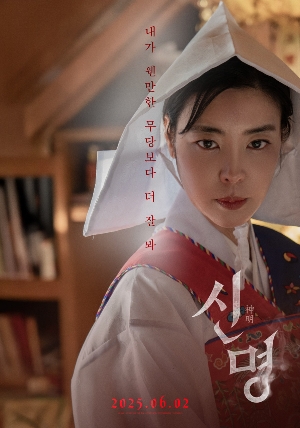
Introduction
In the ever-evolving realm of psychological thrillers, The Pact (2025) stands out not only for its gripping narrative but also for its immersive soundscape that pulls audiences into a tense, emotionally charged world. As a film that leans heavily on subtle cues, eerie silences, and carefully crafted ambient textures, its sound design plays a central role in driving narrative and emotional impact. This article will analyze The Pact from the perspective of a sound director, delving into how audio elements shape the storytelling, support character development, and enhance audience engagement. By exploring the film’s plot through its acoustic dimension, we can understand how it succeeds—or in some ways, falls short—as a compelling cinematic experience.
1. Narrative Depth Enhanced by Sound
The Pact follows the story of a grief-stricken mother, Claire, who begins to suspect that her recently deceased daughter may be reaching out to her from beyond. The plot weaves psychological horror with supernatural undertones, and it’s the soundscape that reinforces this ambiguity. Early in the film, subtle audio cues—like detuned piano notes, warped lullabies, and distant whispers—foreshadow the presence of an unseen force. These elements are not merely atmospheric; they mirror Claire’s descent into paranoia and self-doubt.
From a sound director’s standpoint, these motifs are vital in crafting emotional realism. The film refrains from using loud jump scares. Instead, it opts for sonic tension built through dynamics, texture, and negative space. Silence, or rather the manipulation of silence, is used as a dramatic tool. Moments of near-silence force viewers to lean in, creating a sense of vulnerability that primes them for the next unsettling moment. This psychological strategy demonstrates how crucial sound is in maintaining narrative tension throughout.
What’s especially noteworthy is the way sound is used to represent memory and trauma. Flashbacks are not visually distinct but are sonically separated by low-pass filtering and distorted reverb trails. These techniques give viewers the feeling of entering a disoriented, dream-like state. The blending of diegetic and non-diegetic sound—where a child’s laughter suddenly bleeds into a score cue—blurs reality and illusion, a key thematic concern of the film.
2. Sound Aesthetic and Technical Precision
Technically, The Pact excels in spatial audio design. The use of Dolby Atmos elevates the immersion, with sounds panning organically across the sound field to mimic real-world acoustics. For instance, when Claire navigates through the creaky house, the foley work—each floorboard creak, distant thud, or shifting wind—feels uncannily real, placing the viewer directly in her perspective.
The mixing choices are also deliberate. Dialogue is mixed tightly, often in close-mic proximity, giving the effect of eavesdropping on internal thoughts or whispered fears. This choice, paired with carefully modulated room tones, amplifies psychological tension without overwhelming the audience with loud effects.
In several key scenes, the film uses frequency manipulation to influence emotional response. When Claire experiences panic attacks, high-frequency tinnitus-like tones subtly rise in the mix, paired with low-end rumbles that physically unsettle viewers. These sounds are not just embellishments; they reflect the character’s inner state, achieving a powerful narrative alignment between sound and psychology. This level of detail demonstrates the audio team’s understanding of psychoacoustic principles and emotional cueing—both hallmarks of advanced sound design.
3. Box Office Success and Sound’s Role in Marketability
While The Pact boasts a modest budget, it achieved strong performance at the box office, especially in international markets. A key reason for this success lies in its smart use of sound to differentiate itself from typical horror fare. Rather than relying on formulaic musical stingers or overused audio tropes, the film builds its brand on sophisticated auditory storytelling. This approach resonated with both critics and audiences, with reviews frequently citing “innovative sound design” as a standout feature.
Moreover, the film’s sound design contributed heavily to viral marketing. Teasers and trailers made strategic use of isolated sound bites—like a whispering voice saying “come home” or the distorted sound of a child’s laughter—to evoke curiosity and generate social buzz. These minimal but chilling audio signatures became recognizable motifs tied to the film’s identity, increasing audience anticipation and emotional investment even before the full release.
From a commercial perspective, this shows how strategic audio branding can enhance a film’s marketability. The audio team’s decision to develop unique, repeatable sound motifs allowed The Pact to stand out in a crowded market. It demonstrates that great sound design is not only an artistic decision but also a smart business strategy.
Conclusion
The Pact (2025) is a masterclass in how thoughtful sound design can elevate a film from good to unforgettable. From reinforcing narrative ambiguity to guiding emotional responses and even influencing marketing success, the role of sound in this film cannot be overstated. As a sound director, one can appreciate the precision, restraint, and innovation embedded in every sonic detail.
The film’s reliance on ambient design, frequency dynamics, and spatial precision proves that audio is not merely supportive—it is central to the storytelling engine. Whether you're a filmmaker, sound designer, or just a curious viewer, The Pact offers valuable lessons in how sound can shape cinematic reality. In a genre often dominated by visual spectacle, this film is a timely reminder that sometimes, what we hear—or don’t hear—matters just as much as what we see.